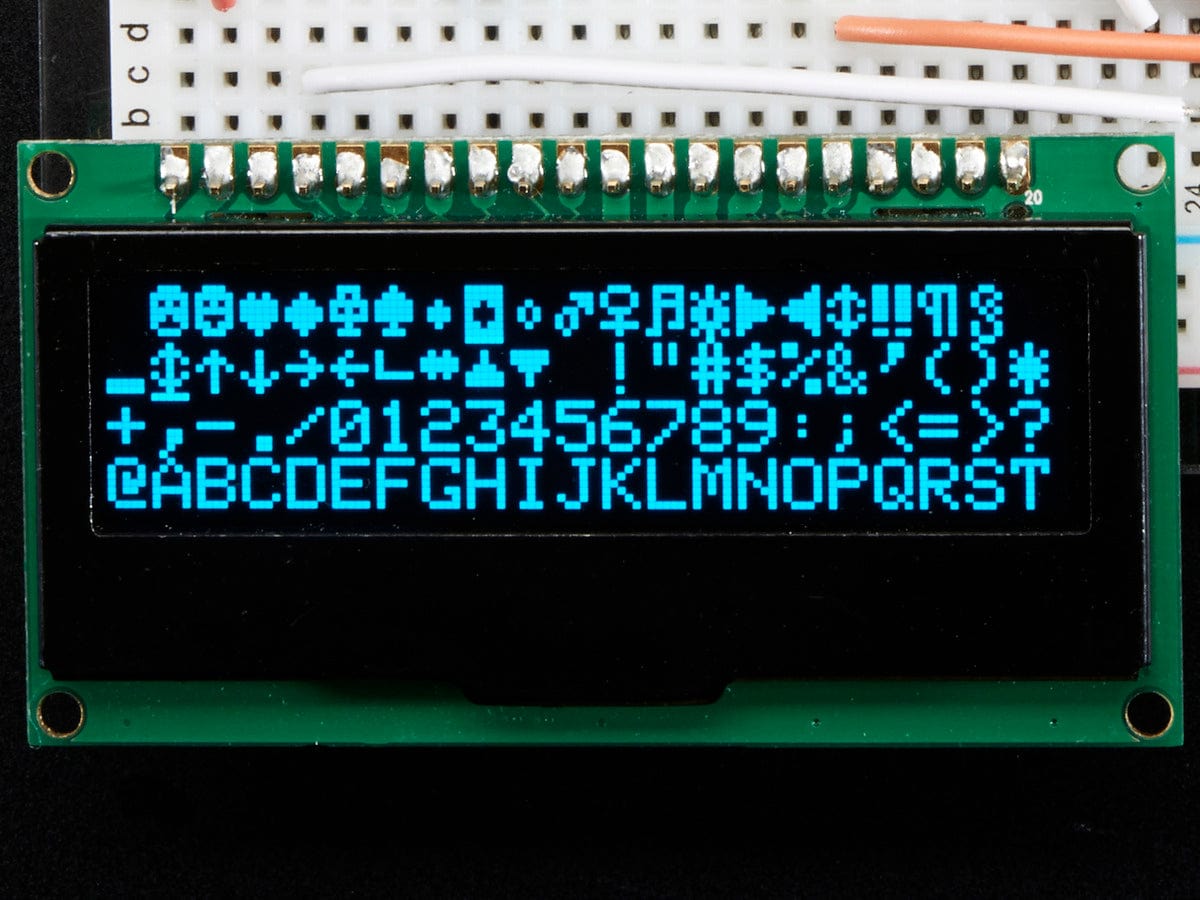
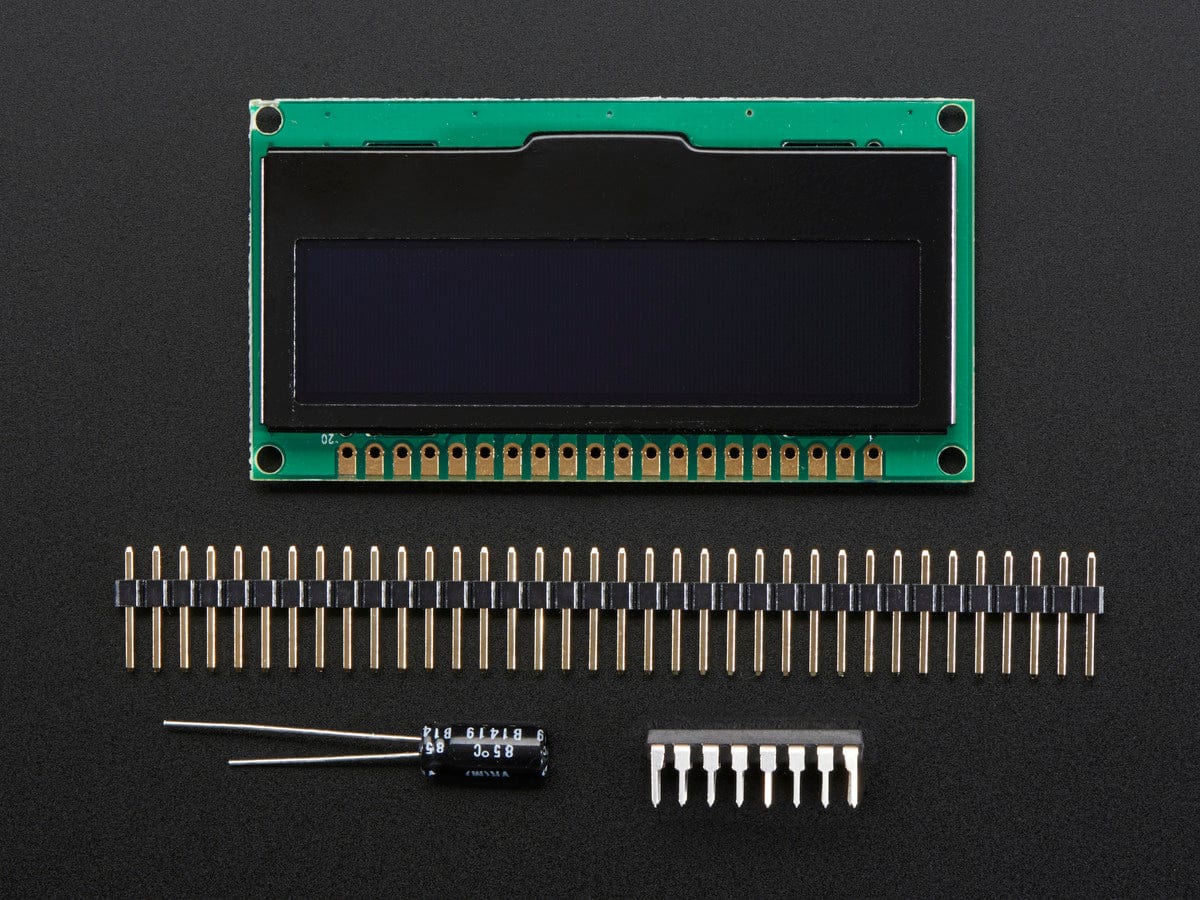
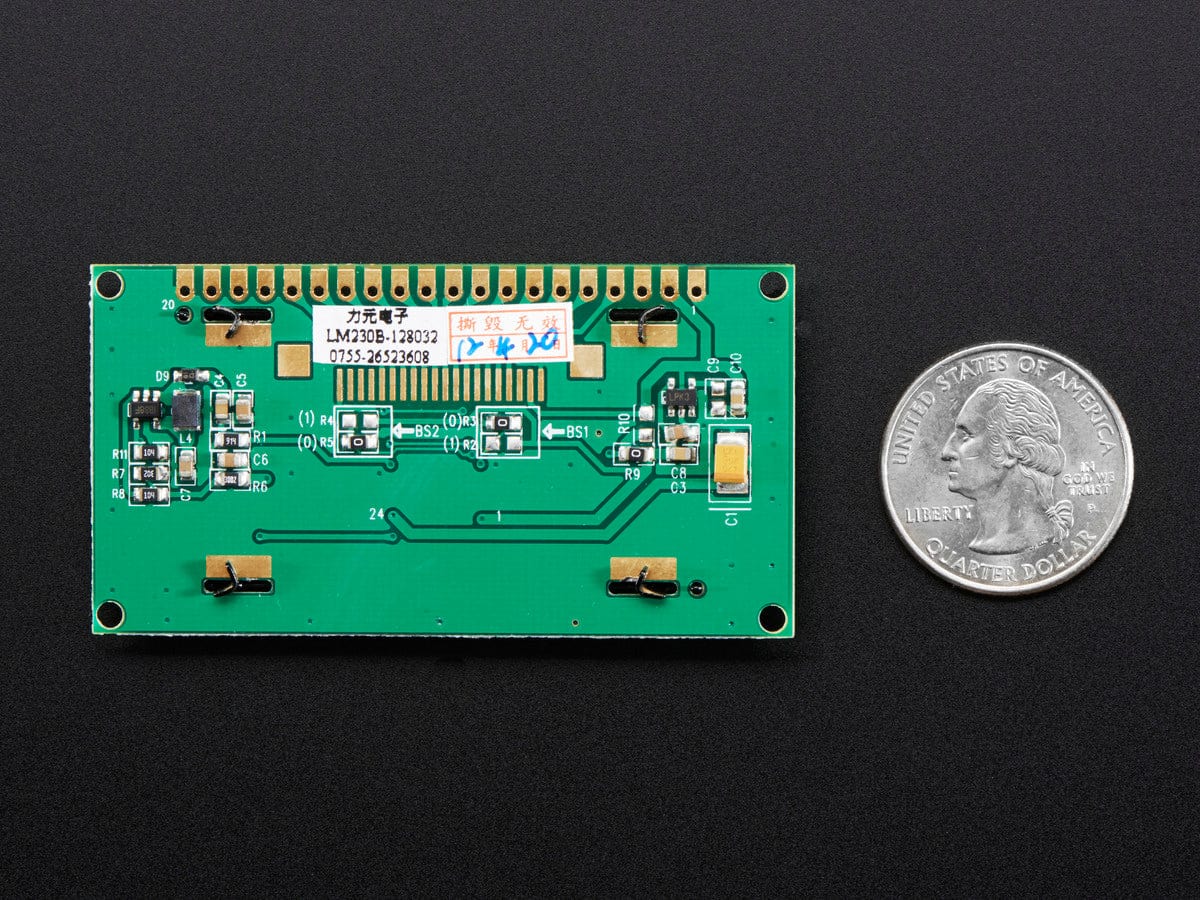
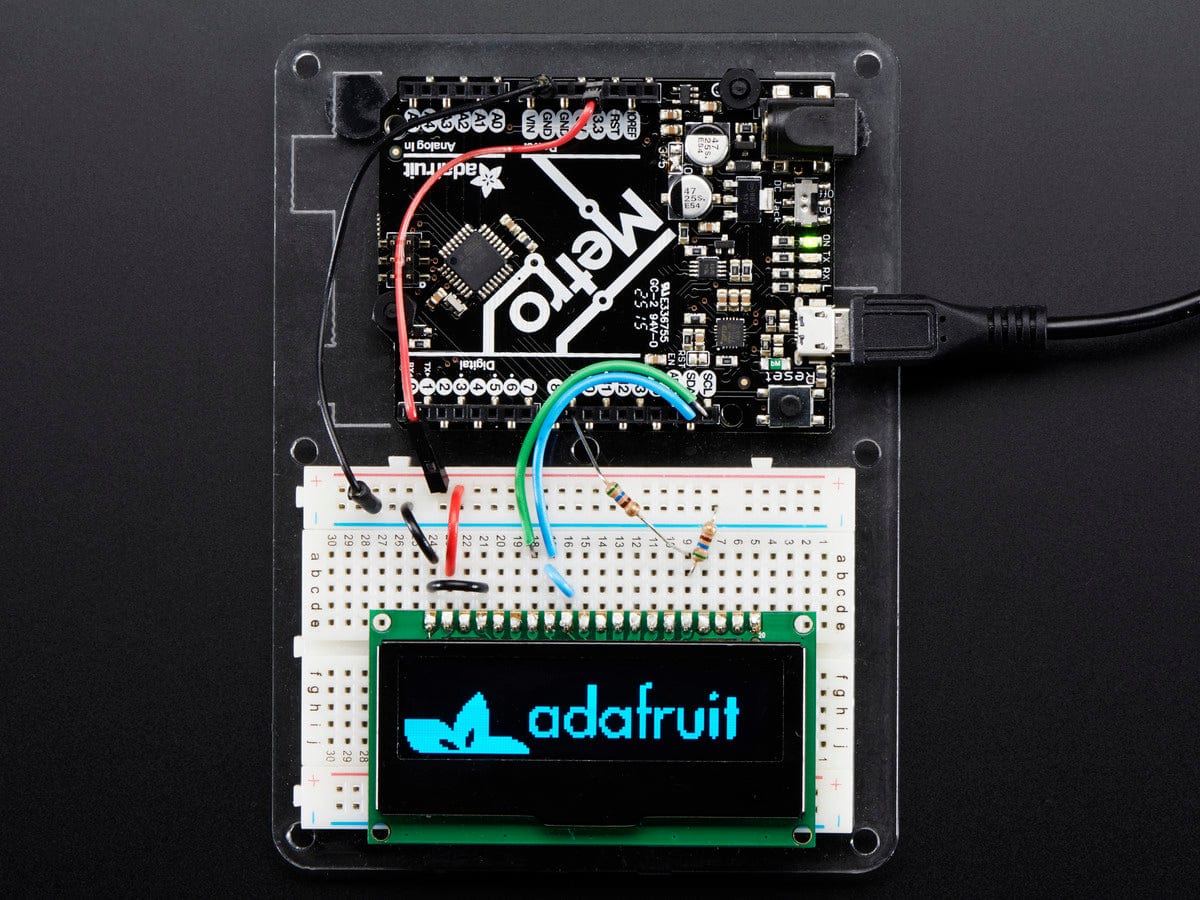
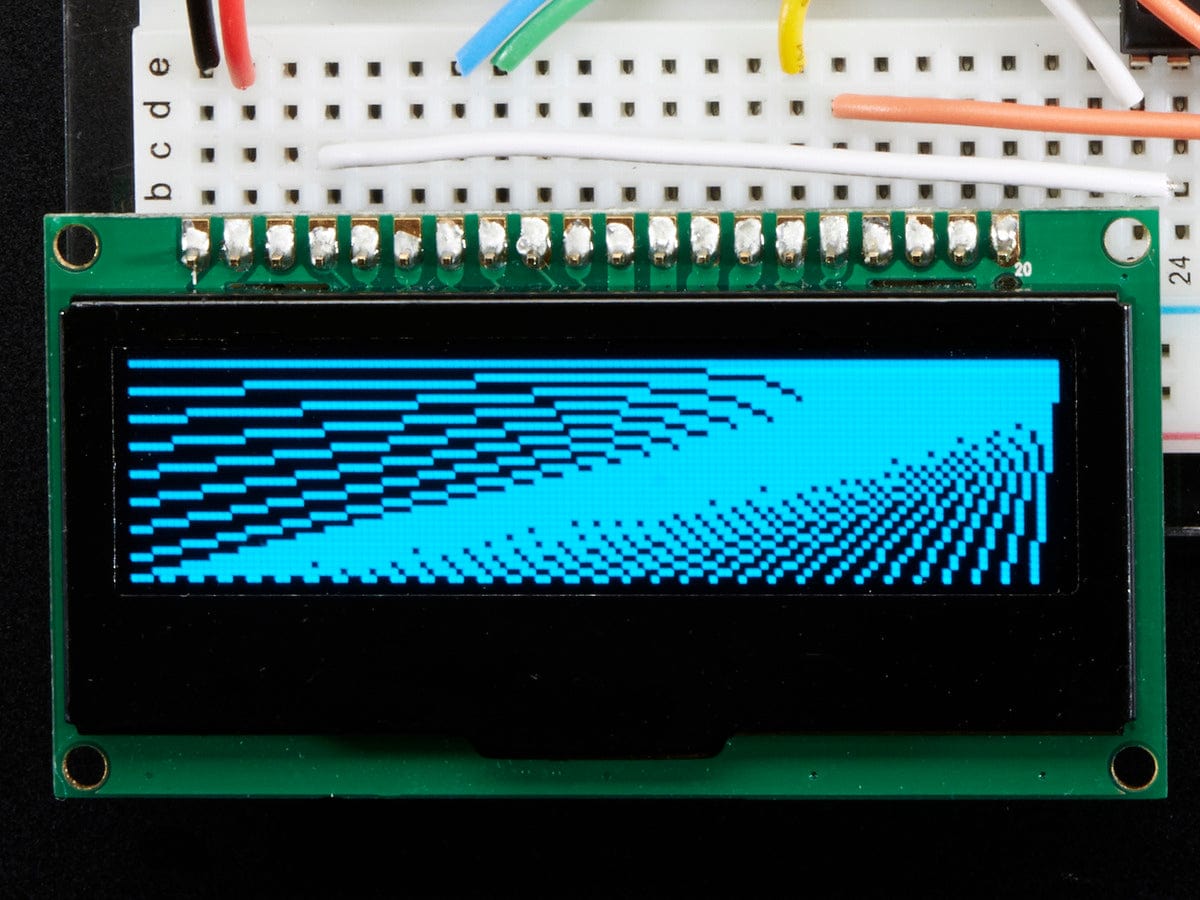
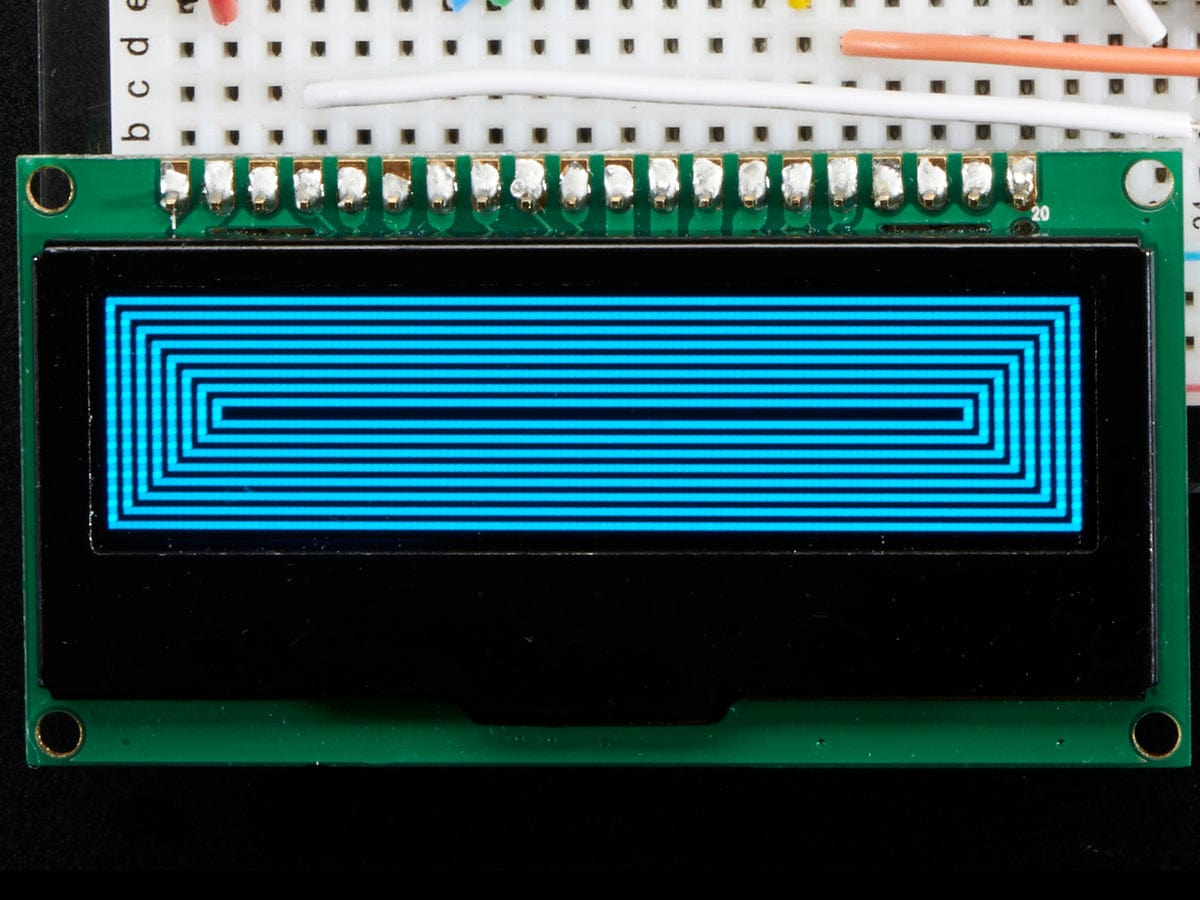
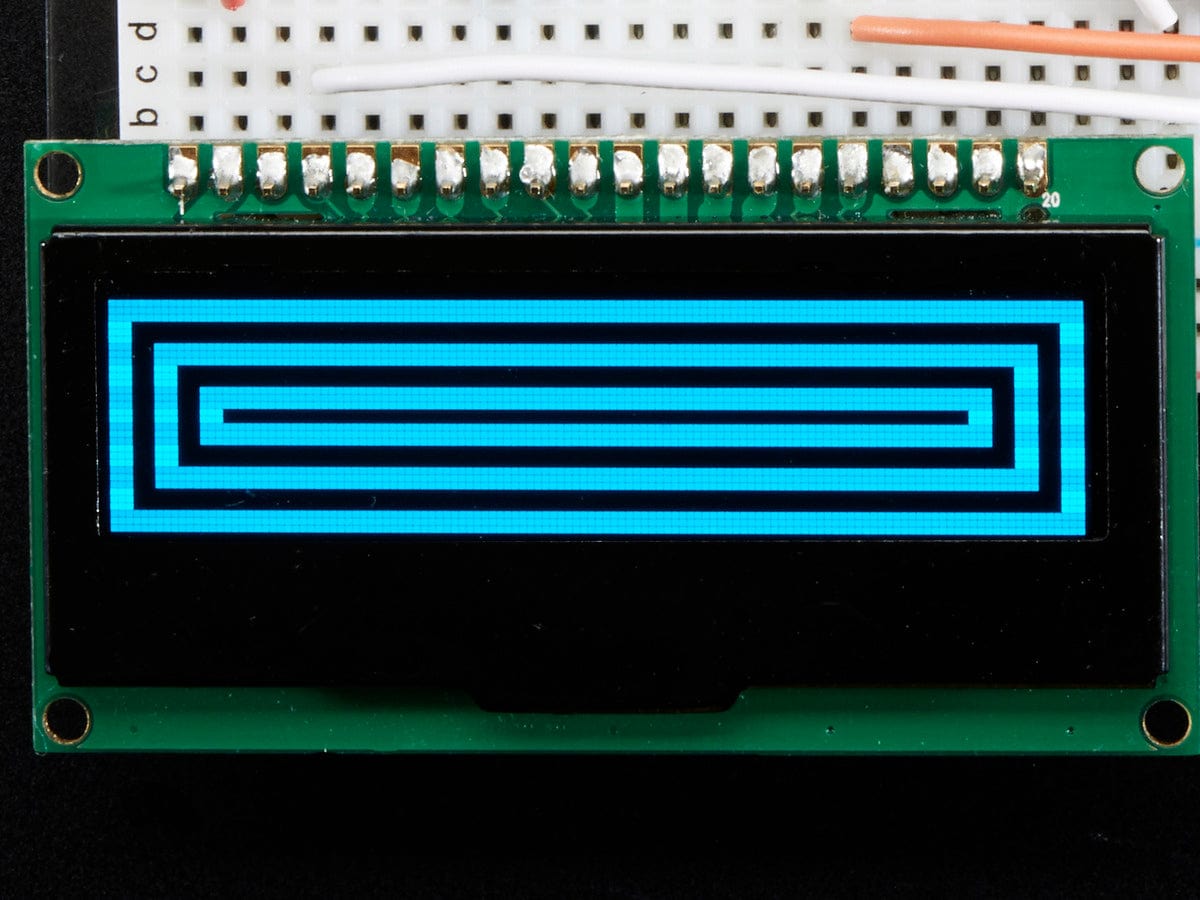
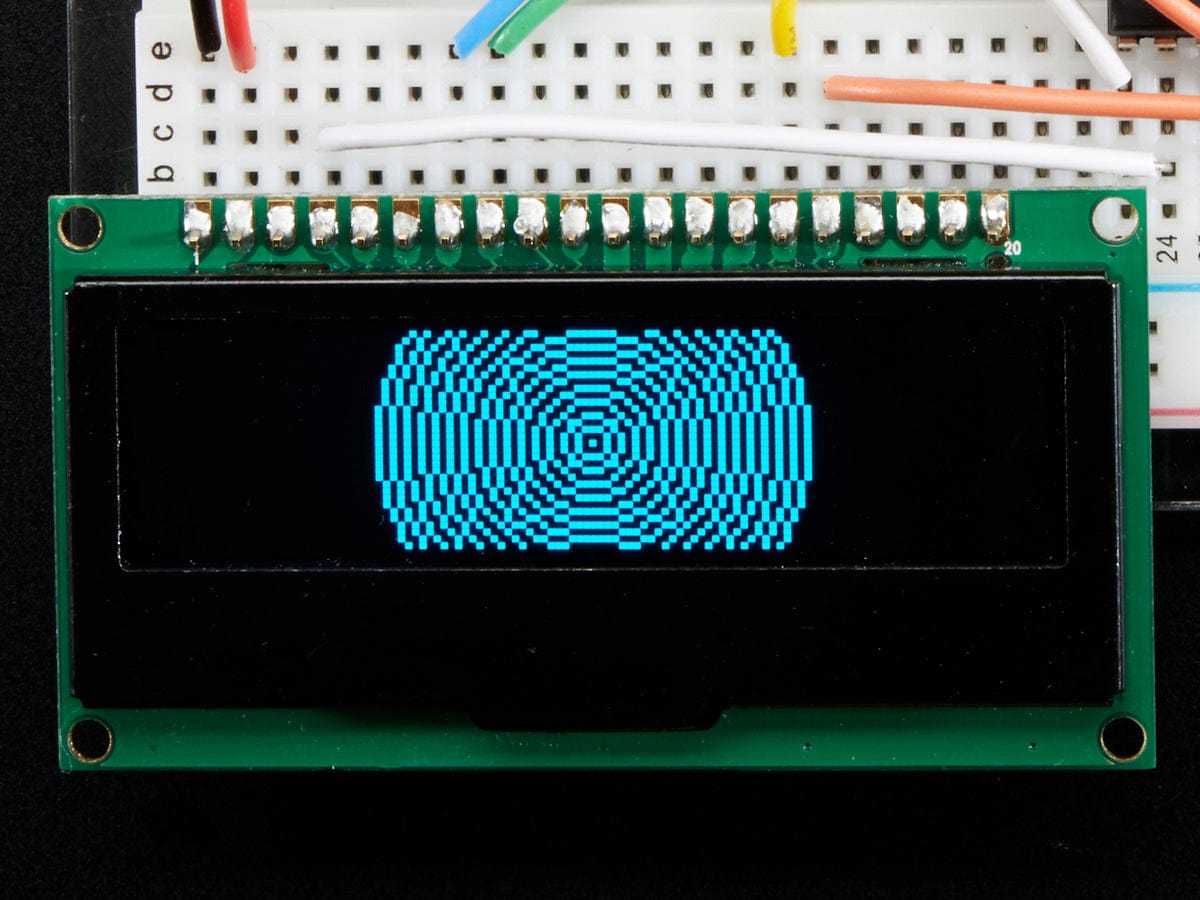
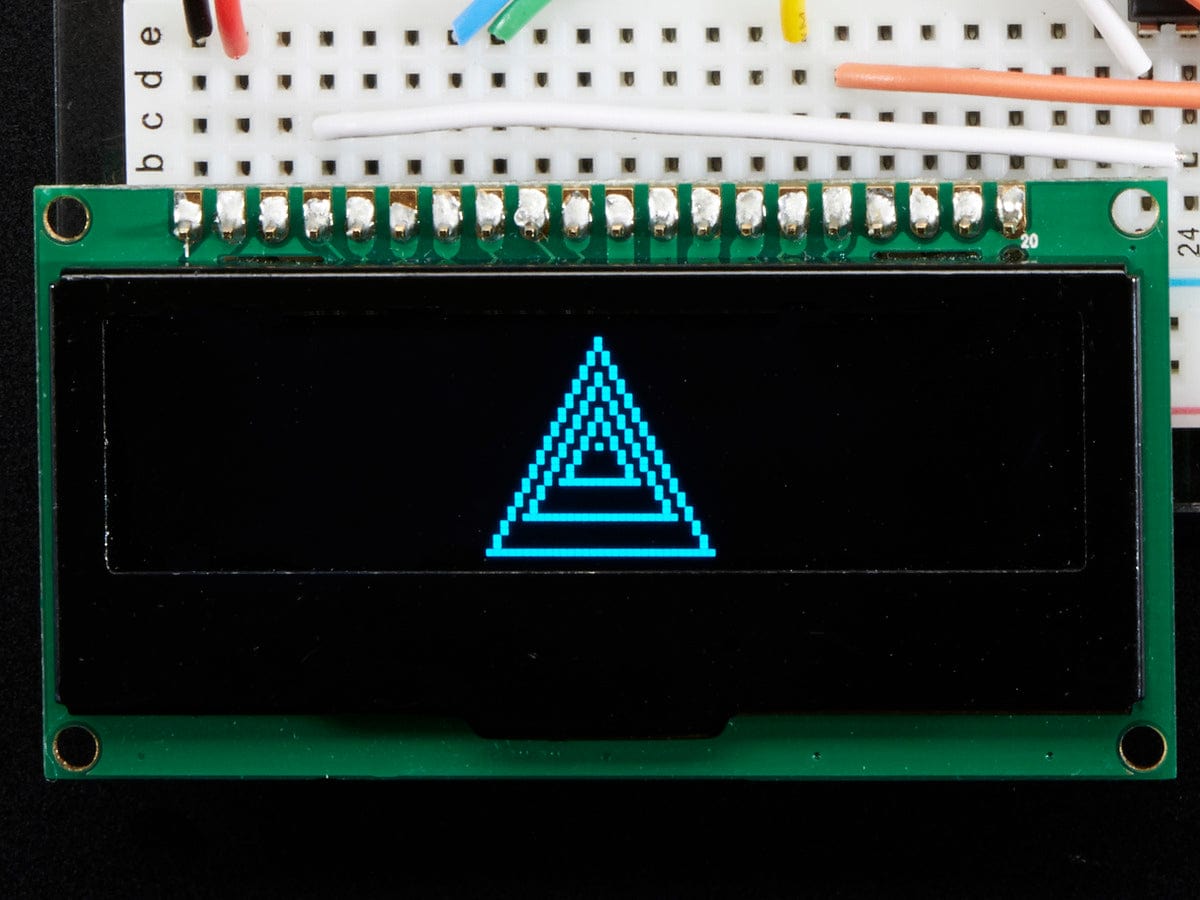
Login / Signup
Cart
Your cart is empty
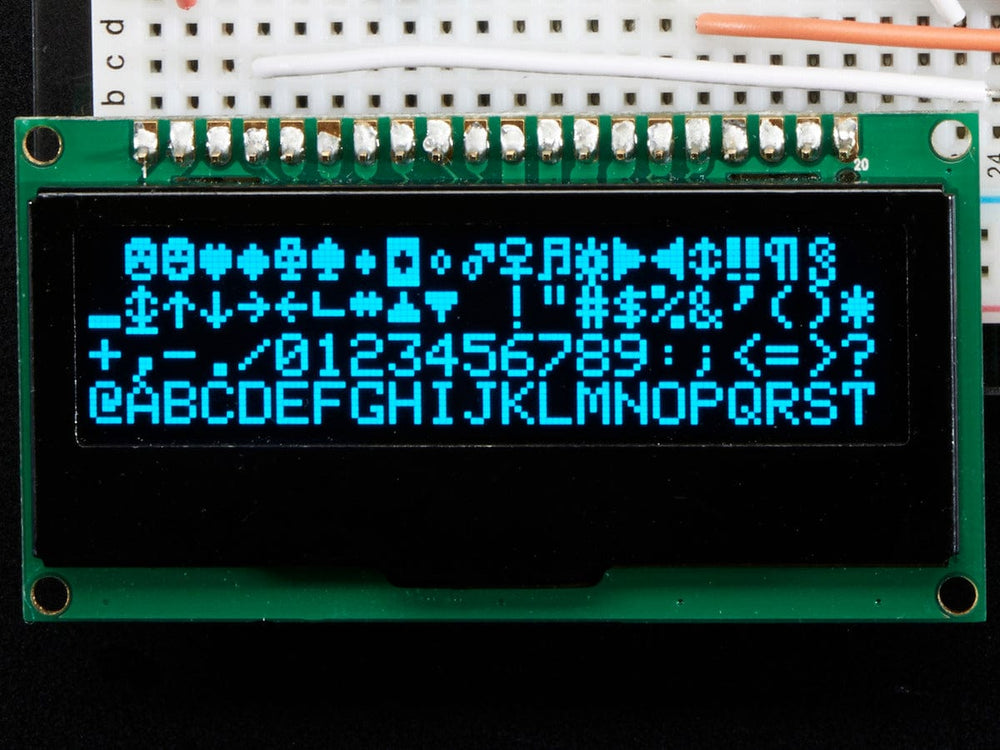
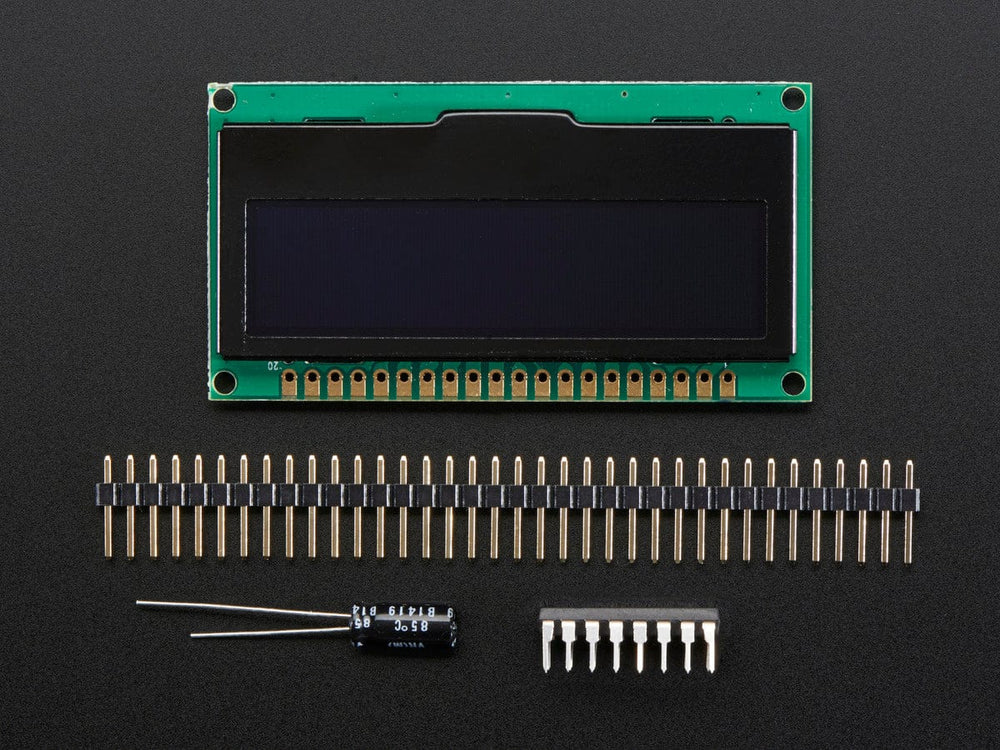
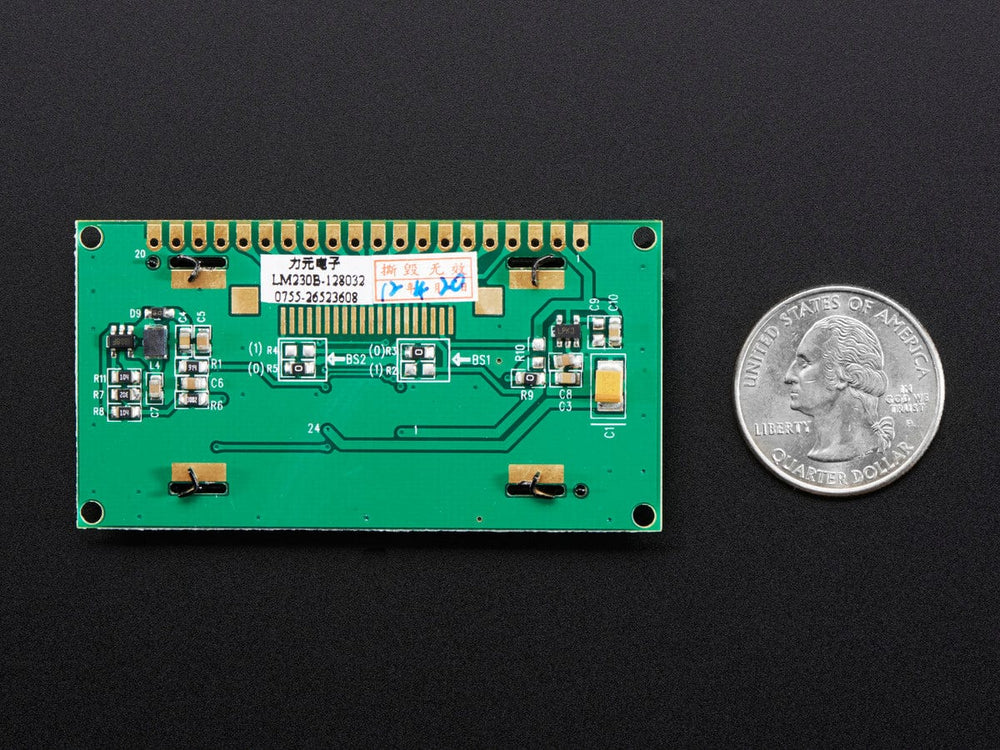
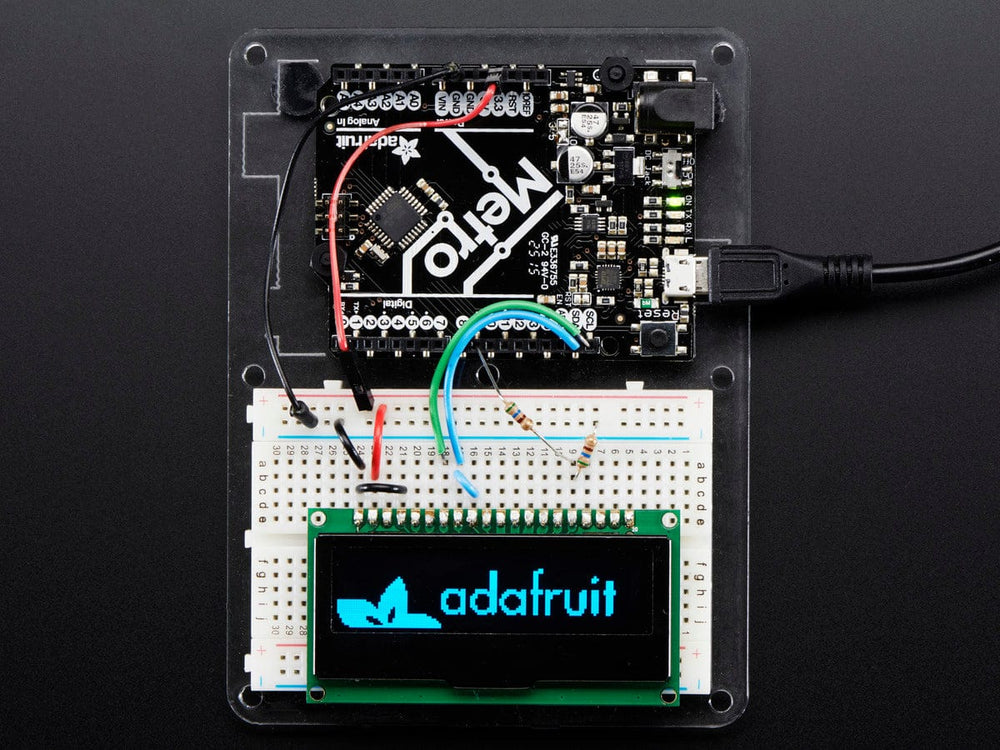
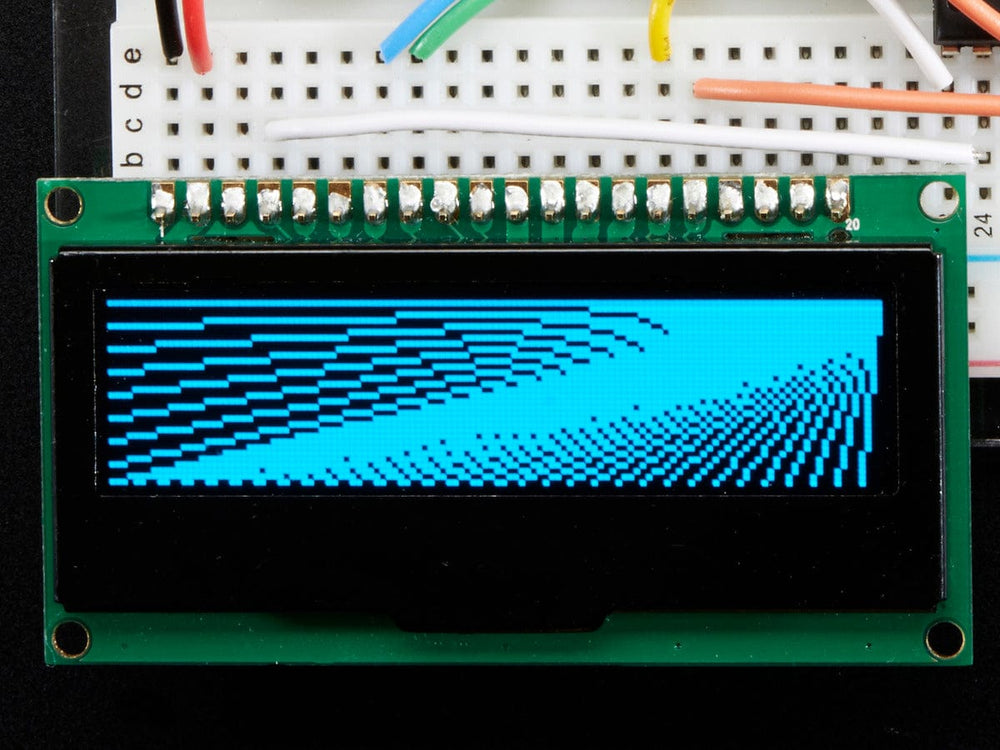
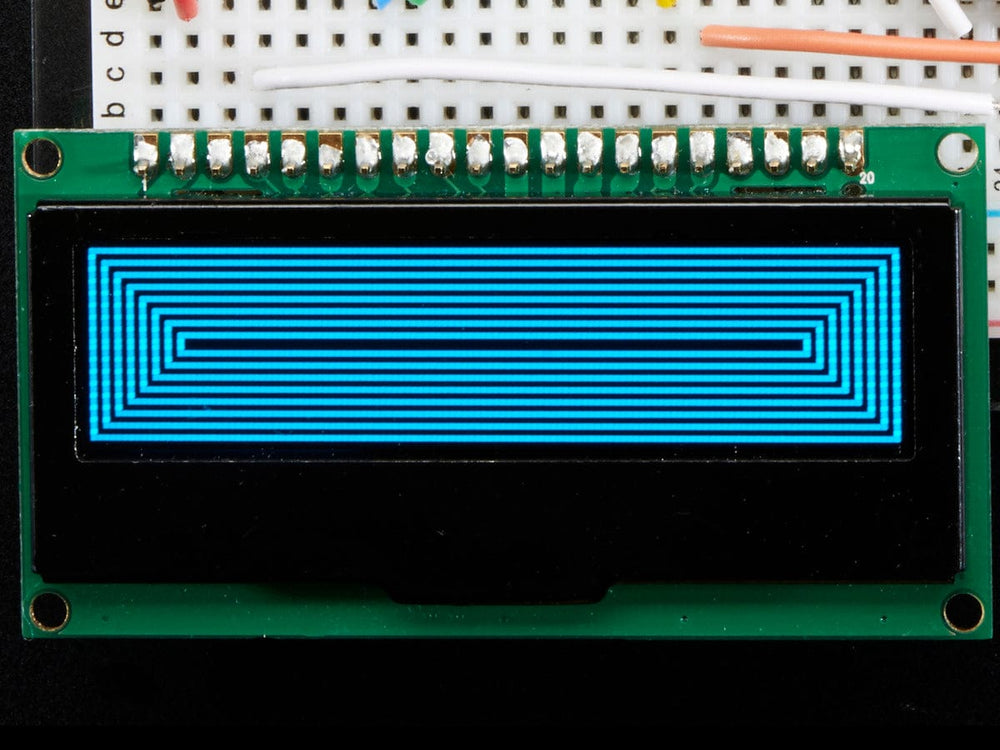
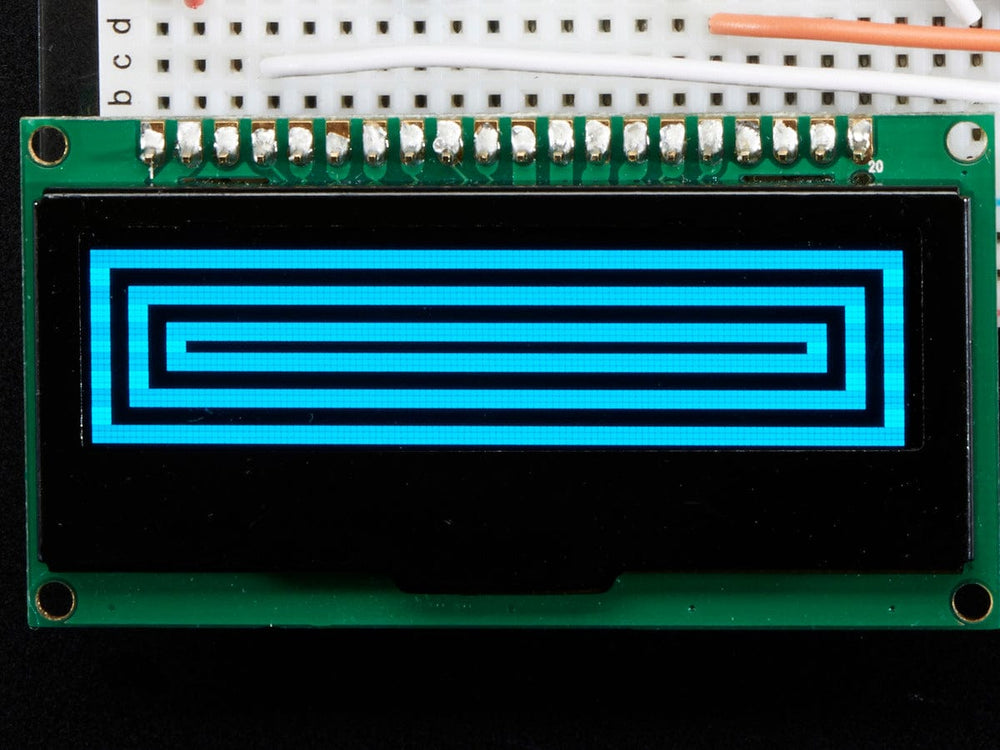
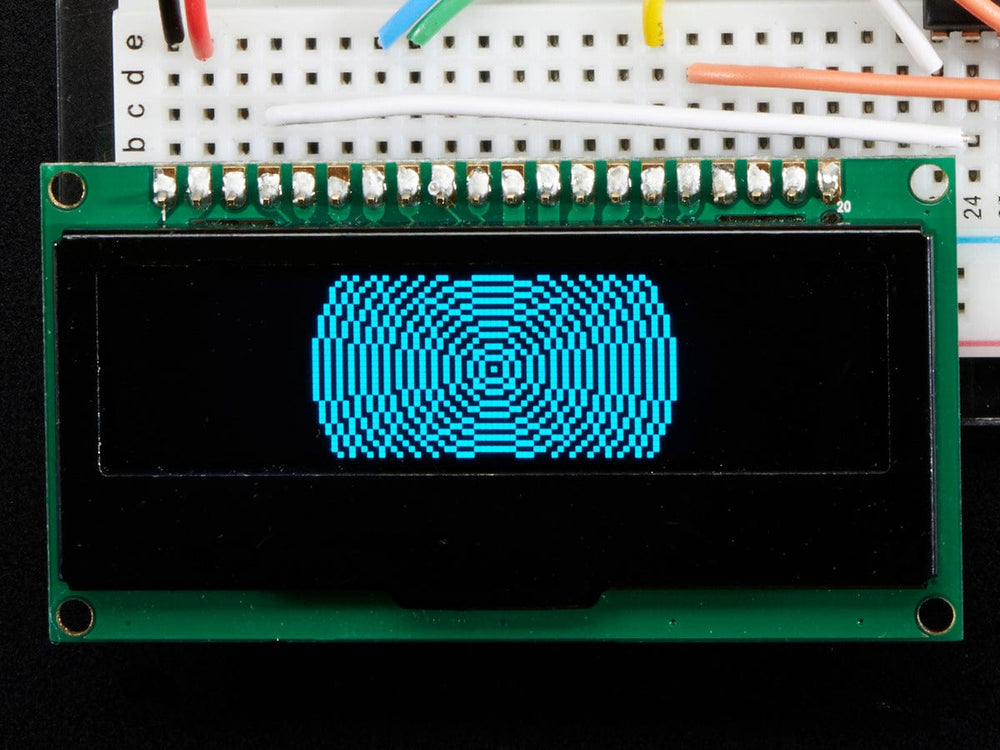
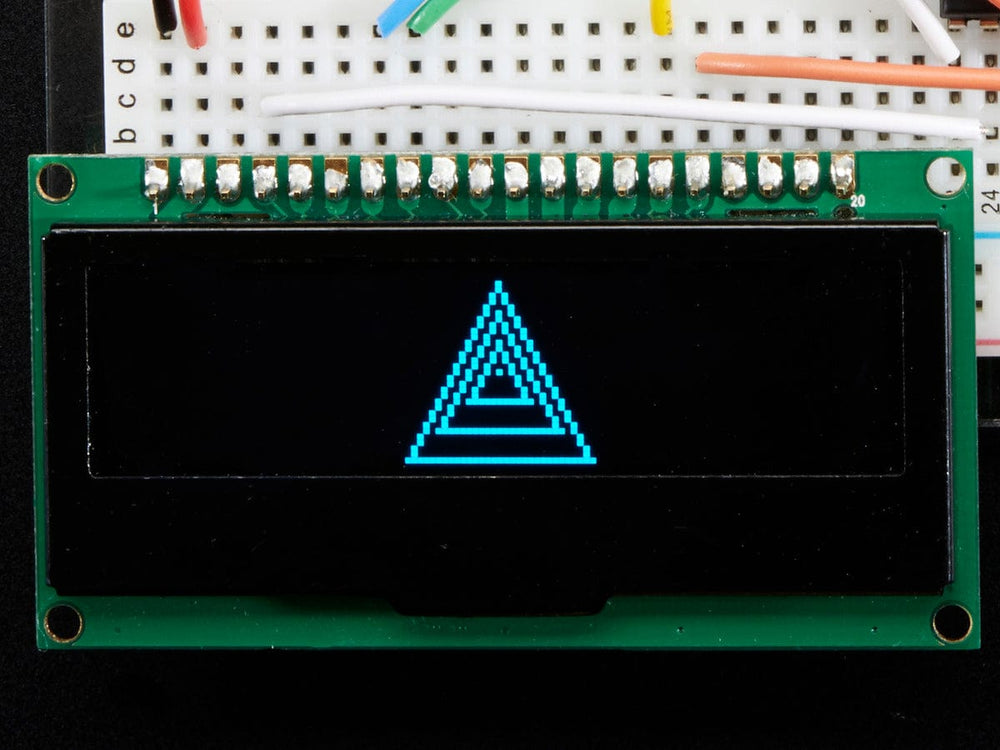
If you've been diggin' our monochome OLEDs but need something bigger, this display will delight you. These displays are 2.3" diagonal, and very readable due to the high contrast of an OLED display. This display is made of 128x32 individual blue OLED pixels, each one is turned on or off by the controller chip. Because the display makes its own light, no backlight is required. This reduces the power required to run the OLED and is why the display has such high contrast; we really like this graphic display for its crispness!
The driver chip, SSD1305 can communicate in three ways: 8-bit, I2C or SPI. Personally we think SPI is the way to go, only 4 or 5 wires are required and its very fast. The OLED itself requires a 3.3V power supply and 3.3V logic levels for communication. We include a breadboard-friendly level shifter that can convert 3V or 5V down to 3V, so it can be used with 5V-logic devices like Arduino.
The power requirements depend a little on how much of the display is lit but on average the display uses about 50mA from the 3.3V supply. Built into the OLED driver is a simple boost converter that turns 3.3V into a high voltage drive for the OLEDs. The boost converter which may make a squeaking/buzzing noise, which you can minimize by adding hot-glue or foam tape around the inductor but may not be completely removable.
Each order comes with one assembled OLED module with a nice bezel and 4 mounting holes. The display is 3V logic & power so we include a HC4050 level shifter. We also toss in a 220uF capacitor, as we noticed an Arduino may need a little more capacitance on the 3.3V power supply for this big display! This display does not come with header attached but we do toss in a stick of header you can solder on. Also, the display may come in 8-bit mode. You can change modes from 8-bit to SPI or I2C with a little soldering, check out the tutorial for how to do so.
Getting started is easy! We have a detailed tutorial and example code in the form of an Arduino library for text and graphics. You'll need a microcontroller with more than 512 bytes of RAM since the display must be buffered. The library can print text, bitmaps, pixels, rectangles, circles and lines. It uses 512 bytes of RAM since it needs to buffer the entire display but its very fast! The code is simple to adapt to any other microcontroller.
Please note that OLED displays are made of hundreds of...OLEDs! That means each pixel is a little organic LED, and if its kept on for over 1000 hours it'll start to dim. If you want to keep the display uniformly bright, please turn off the display (set the pixels off) when it isn't needed to keep them from dimming.











